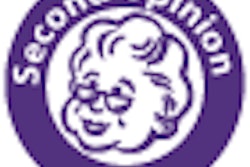In a 15-1 vote on April 7, the Medicare Payment Advisory Commission (MedPAC) recommended that Medicare require clinicians who order more imaging studies than their peers to obtain prior authorization for advanced imaging.
The advisory panel to Congress passed the recommendation at a public meeting held in Washington, DC. The panel also moved that the U.S. Centers for Medicare and Medicaid Services (CMS) lower payments for successive imaging studies performed during the same imaging session.
MedPAC's recommendation would give CMS a tool for cracking down on imaging overuse, requiring high-volume physicians to go through a preauthorization process, while practitioners with a low rate of use would only be subject to prior notification, according to a presentation by Ariel Winter, a MedPAC senior analyst.
The top 10% of physicians account for more than 50% of advanced imaging use, and a significant share of these top 10% self-refer, Winter said. Preauthorization criteria would be based on clinical guidelines developed by specialty groups, literature reviews, and expert panels, and the protocol could serve as a kind of "gold card" for physicians with low rates of unnecessary use.
The public session and ensuing vote follow a February meeting during which MedPAC commissioners discussed draft recommendations to improve payment accuracy and the appropriate use of ancillary services such as imaging and other diagnostic tests.
Got data?
MedPAC's data actually showed a slowdown in the rate of imaging growth from 2008 to 2009: Volume (units and intensity) of all imaging grew 2% per Medicare fee-for-service beneficiary during that year, but the volume of advanced imaging grew only 0.1% per beneficiary. Industry data for the same time frame showed the volume of all imaging declining by 7.1%, and the volume of advanced imaging declining by 0.1%, according to MedPAC's presentation.
But Winter cited "issues with industry's method" for calculating the data, saying that cumulative growth in imaging volume in the physician fee schedule between 2000 and 2009 was 85%, which raises the concern about both appropriate use and radiation exposure for patients.
Industry reaction to MedPAC's recommendation was swift. In a statement, the Medical Imaging and Technology Alliance (MITA) criticized the data the MedPAC commission used.
"MedPAC continues to rely on out-of-date data to reach inaccurate conclusions regarding the use of life-saving advanced medical imaging services," MITA said in a press release. "Today, while MedPAC finally admitted that imaging utilization is flat, they still approved recommendations to further cut reimbursements to imaging procedures that have experienced significant cuts during the last five years and already face added cuts over the next few years."



















